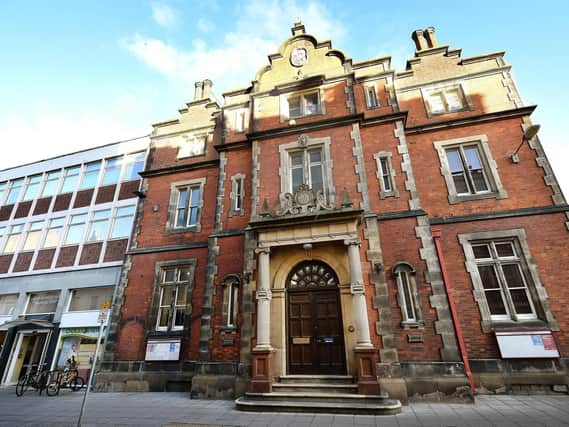Council leaders set out their 'vision for North Yorkshire devolution'


Last month, the county’s seven district councils, which include Scarborough Council, were told they would have to be scrapped if North Yorkshire wants devolution, which would bring more powers and spending potential to the county.
Following a meeting with Local Government Minister Simon Clarke, it is proposed to create one or two combined authorities under a metro Mayor for the county in 2022.
Advertisement
Hide AdAdvertisement
Hide AdNow, the leaders of the authorities involved have set out what they would like to see in a devolved North Yorkshire.
The county council favours one large authority for North Yorkshire, which it says will save tax-payers £25m a year.
Conservative council leader Cllr Carl Les said: “Not only will a single council based on the county’s current identity, simplify things for people and businesses – renewing our economic fortunes following the shock delivered by the pandemic – it will protect and strengthen high-quality frontline services.
“It will also unleash the county’s potential and deliver very significant financial savings by ending duplication, improving efficiency and driving innovation.
Advertisement
Hide AdAdvertisement
Hide Ad“We estimate savings in excess of £25m every year, offering the best value for money for everyone.
“No other bid would be able to match these benefits. Equally importantly it will protect a global and recognised brand which is crucial for our visitor economy.”
The leader of York City Council, which is already a unitary authority, Liberal Democrat Keith Aspden, has also gone on the record asking for the authority to have its boundaries kept intact.
He told a recent council meeting: “City of York has worked successfully as a unitary authority since 1996, representing a unique self-governing and historic city.
Advertisement
Hide AdAdvertisement
Hide Ad“We do not believe that any changes to our structures or boundaries are required.”
The county’s seven district councils – Scarborough, Harrogate, Ryedale, Craven, Hambleton, Selby and Richmondshire – are working together on alternative proposals, that would likely see the county and York split in half to create two authorities of roughly the same population size under one Mayor.
On Saturday, Yorkshire Day, the leaders of the seven districts had a letter published in The Times setting out their opposition to the county’s “mega council” plan.
Speaking on behalf of the districts Cllr Steve Siddons, the Labour leader of Scarborough Borough Council, said: “A mega council, covering the entire North Yorkshire area – the biggest county area in the whole country – has been mooted.
Advertisement
Hide AdAdvertisement
Hide Ad“But we don’t believe that’s workable, or in the best interests of our people, places and economy. Our citizens deserve better, which is why we’re campaigning to create an alternative bid that gets reorganisation right.”
In the letter sent to the Times the council leaders called for “good old- fashioned Yorkshire common-sense” to prevail on local government reorganisation, which they say should be centred on workable geographies and an understanding of local communities and economies.
Both the county council and the district councils say their plans are based around the Government’s ideal size for unitary councils.
North Yorkshire County Council says its single council bid will align with a public statement from the Secretary of State, Simon Clarke MP in June when he said that “as a rule of thumb” new unitary authorities are expected to have populations “substantially in excess of 300,000-400,000”.
Advertisement
Hide AdAdvertisement
Hide AdNorth Yorkshire as a whole would have a population of approximately 600,000.
Cllr Siddons, meanwhile, says the districts are working to what they were told by Mr Clarke that the “optimum” size for a unitary authority would be 400,000 people and not below 300,000.
If this were the case it would mean that York, with a population of approximately 210,000 would be too small to go it alone.
When asked by the Local Democracy Reporting Service about the discrepancy in the figures being quoted by the authorities a spokesman for the Ministry of Housing, Communities and Local Government said Mr Clarke had been quoting previously published data issued by the department in 2006 which suggested that 400,000-600,00 was the optimal range.
Advertisement
Hide AdAdvertisement
Hide AdLater, in advice given to Northamptonshire authorities in 2018 documents produced at that time stated that new unitary authorities were expected to have a “substantial population that at a minimum is substantially in excess of 300,000” and be based on “credible geography”.
An spokesman for the Ministry said: “We’re committed to levelling up all areas of the country and empowering our regions by devolving money, resources and control away from Westminster. We’ll set out our detailed plans in a White Paper this autumn”
Plans for devolution for North Yorkshire have to be submitted to the Government by September.